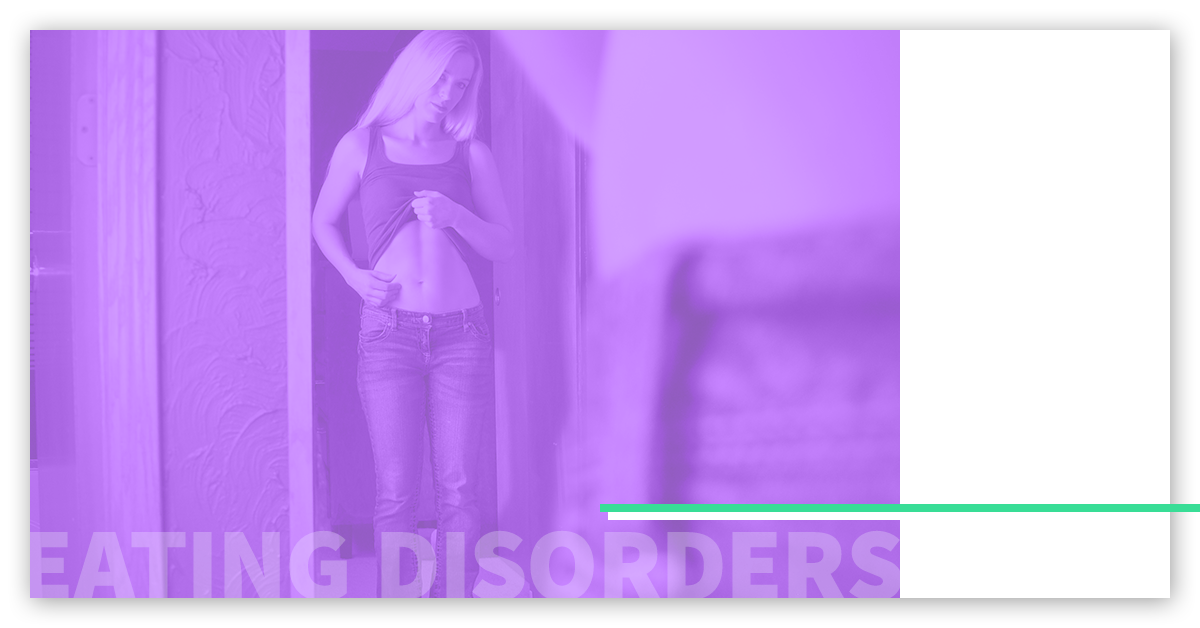Eating Disorders

Eating disorders include a number of different, unhealthy, unusual eating patterns that people engage in despite the negative effects on their bodies and minds. Some people have very inaccurate and disturbed views of their physical appearance, while other disorders have a more compulsive nature to the behaviors.
What are Eating Disorders?
Eating Disorders include Anorexia Nervosa, Bulimia Nervosa, Binge-Eating Disorder, Avoidant/Restrictive Food Intake Disorder, Rumination Disorder, and Pica.
The first two Eating Disorders, Anorexia and Bulimia, have a similar psychological base. These people have a powerful desire to be thin. They are obsessed with monitoring perceived areas of ‘fat’ on their bodies. People with Anorexia usually starve themselves. Those with Bulimia binge and purge (although some people with Anorexia will also binge and purge). Binges are short episodes where people consume extraordinary amounts of food in a short period of time. These are accompanied by feelings of shame and loss of control. Purges immediately follow binges and involve various methods of preventing weight gain from the binge, such as forced vomiting. A key difference between Anorexia Nervosa and Bulimia Nervosa is that people with Anorexia are under normal weight, while people with Bulimia are at or above normal weight ranges.
People with Binge-Eating Disorder have binge-eating episodes, but they do not purge, nor are they underweight. Although this may sound similar to patients with Bulimia Nervosa and some of those with Anorexia Nervosa who binge as well, people in those cases also purge. Binges occur multiple times a week and include similar feelings about losing control as in the other disorders with binges.
Avoidant/Restrictive Food Intake Disorder is similar to Anorexia Nervosa in that patients avoid and minimize eating to such an extent that they become dangerously underweight. The key difference is that people with Avoidant/Restrictive Food Intake Disorder do not fear gaining weight.
People with Rumination Disorder regurgitate their food and re-chew it. Those with Pica regularly eat non-food items like paper, dirt, or ice in addition to their regular diet.
Who gets Eating Disorders?
Negative Body Image
People with the Eating Disorders Bulimia Nervosa and Anorexia Nervosa share an unhealthy focus on fat and body weight. Their actions related to food are designed to affect their physical appearance.
Issues of Control
One of the central emotional characteristics of binge eating is a sense of loss of control. Once a binge starts, people will eat rapidly and only stop once they are painfully full. After these episodes, people are upset and feel a great deal of shame.
Childhood beginnings
Eating Disorders like Rumination Disorder, Avoidant/Restrictive Food Intake Disorder, and Pica most commonly begin in childhood or adolescence, often in a neglectful or chaotic environment.


 Learn
Learn Get News
Get News Find Help
Find Help